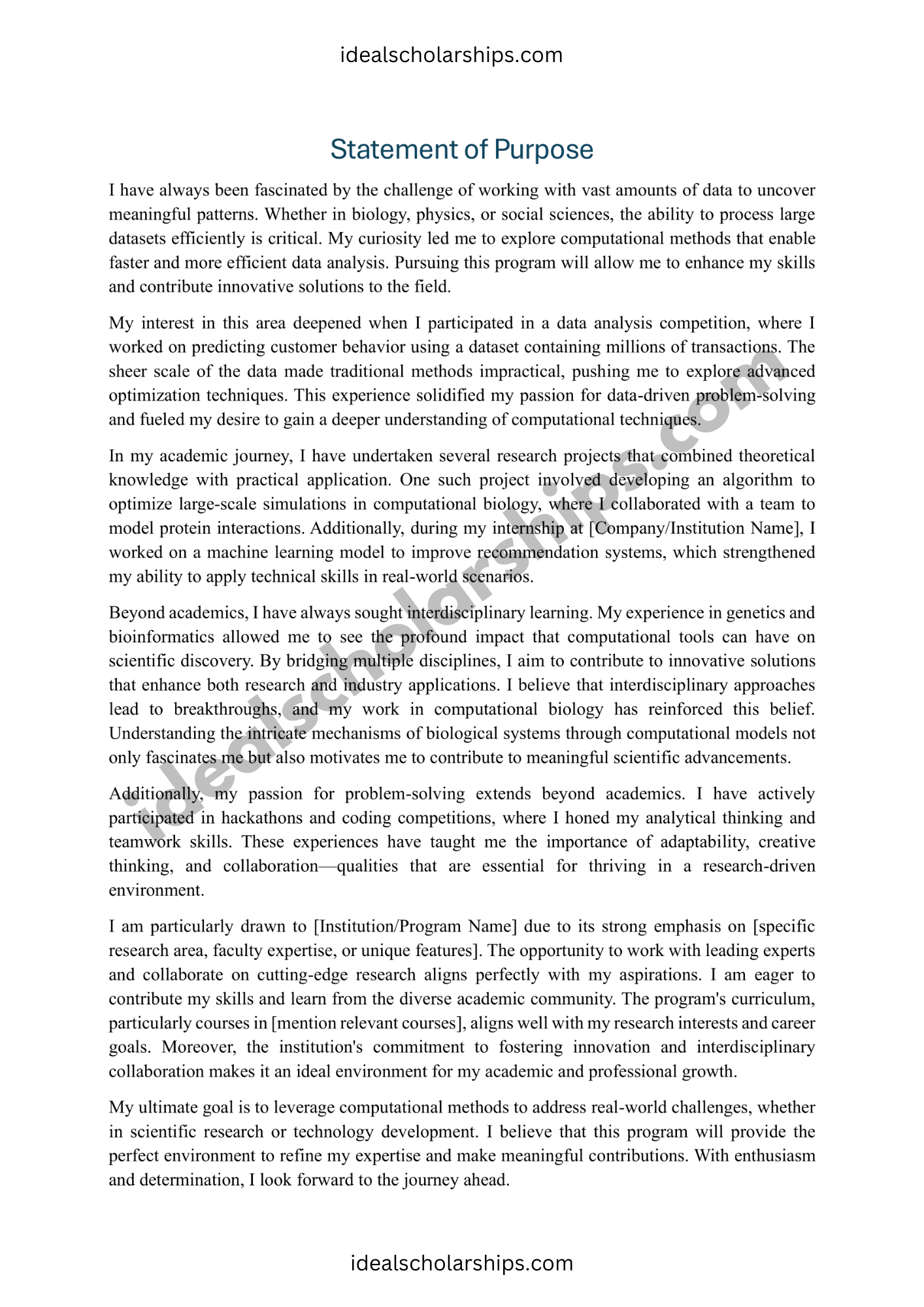Understanding the Statement of Purpose
A Statement of Purpose (SOP), also known as a personal statement, is a critical component of many application processes, including undergraduate, graduate, professional, and specialized programs. Writing the best Statement of Purpose (SOP) allows you to showcase who you are, what your academic and professional interests are, and how you will contribute to the program you are applying to. Admissions committees use the SOP to understand your background, motivation, and future aspirations, making it a key factor in the selection process.
Why is the SOP Important?
A well-crafted SOP can be the deciding factor in your admission. It allows you to go beyond grades and test scores, giving the admissions committee insight into your personality, experiences, and career goals. Whether you are applying for an undergraduate degree, a professional certification, or a research program, your SOP provides a platform to present yourself as a unique and compelling candidate.
Crafting a Strong SOP: Step-by-Step Guide
Step 1: Brainstorm Your Ideas
Before you begin writing, take some time to reflect on your academic and professional journey. Ask yourself the following questions:
- Why do I want to pursue this program?
- What are my expectations from this program?
- Which courses or aspects of the program excite me the most?
- What career path or personal growth do I envision after completing this program?
- How do my personal and professional experiences make me a strong candidate for this program?
Write down your answers as they will form the foundation of your SOP.
Step 2: Create an Outline
A well-structured SOP makes it easier for the reader to follow your journey and understand your motivations. A simple and effective outline includes:
Introduction
- Start with an engaging hook (a personal anecdote, a thought-provoking statement, or a powerful quote).
- Briefly introduce yourself and your academic or professional background.
- Clearly state your motivation for applying to this program.
Body
- Academic and Professional Background: Highlight your relevant studies, research projects, internships, work experience, or extracurricular activities that align with your field of interest.
- Skills and Achievements: Showcase relevant skills, accomplishments, and experiences that demonstrate your readiness for the program.
- Career and Personal Goals: Explain how this program aligns with your short-term and long-term aspirations, whether professional, academic, or personal.
- Why This Institution or Program: Discuss what attracts you to this specific institution or program and how you plan to contribute.
Conclusion
- Summarize key points while reinforcing your enthusiasm for the program.
- End on a positive note, expressing your readiness for the challenges ahead.
Step 3: Write the First Draft
Now that you have an outline, start drafting your SOP. Keep the following points in mind:
- Be Authentic: Write in your own voice and let your personality shine through.
- Be Concise: Stick to the word limit (typically 500-1000 words) and avoid unnecessary details.
- Show, Don’t Tell: Instead of stating qualities like “I am hardworking,” provide examples that demonstrate these traits.
Step 4: Edit and Refine
After completing your first draft, go through multiple rounds of editing:
- Check for grammar, spelling, and punctuation errors.
- Ensure clarity and coherence in your writing.
- Remove redundant or irrelevant information.
- Seek feedback from professors, mentors, or peers.
Essential Tips for a Winning SOP
- Maintain a Positive Tone: Focus on strengths and achievements rather than shortcomings.
- Use Active Voice: Write dynamically to create an engaging read.
- Address Any Gaps or Challenges: If you faced significant obstacles (e.g., health issues, financial difficulties), briefly mention them while emphasizing resilience and determination.
- Customize for Each Program: Avoid generic statements and tailor your SOP to align with the specific program’s features and faculty expertise.
- Stay Focused: Ensure a logical flow between paragraphs and maintain a clear narrative.
- Follow Formatting Guidelines: Use a readable font (11- or 12-pt), appropriate spacing, and proper margins.
Sample Statement of Purpose (SOP)

Additional SOP Resources
Here are some additional resources, which can help you write the best Statement of Purpose (SOP).
University of California Berkeley: SOP Guide
Final Thoughts
Your Statement of Purpose (SOP) is your chance to make a lasting impression on the admissions committee. By carefully writing the best Statement of Purpose (SOP) with a compelling and well-structured approach, you can effectively highlight your strengths, experiences, and aspirations. Whether you are applying for an undergraduate, graduate, research, or professional program, take the time to refine your statement, and most importantly, be genuine in telling your story. Good luck!
Also visit our CV/Resume Ultimate Guide.


